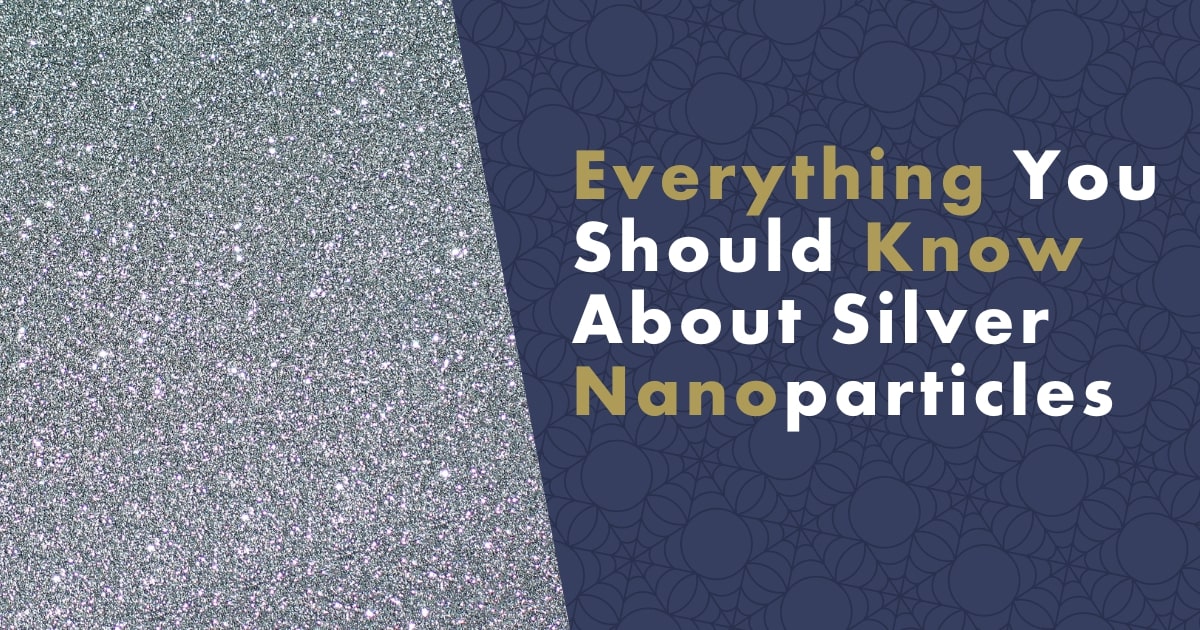Silver nanoparticles are currently one of the most fascinating, promising, and widely used nanomaterials, particularly among metal nanoparticles, due to their very interesting antibacterial, antiviral, and antifungal effects. However, the potential uses of silver nanoparticles are much wider.

Where Are Silver Nanoparticles Used? In Cancer Treatment and Clothing
Nano silver particles are one of the most fascinating, promising and widely used nano materials, particularly for their interesting antibacterial, antiviral and antifungal effects. However, their potential uses are much wider. Nano silver particles are used in antibacterial products, industrial production, catalysis, household products and consumer goods.
They are also popular in sports clothing because they help eliminate odors. They are also used in medical products, optical sensors, cosmetics, paint production, the pharmaceutical industry, food industry, and also in diagnosis and cancer treatment. They are particles of silver of approximately 1 to 100 nanometers in size. The most common ones are spherical, but they also come in other shapes.
They are usually made up not only of silver, but also a relatively large percentage of silver oxide, which is formed by oxidation on the relatively large surface of the nanoparticles. They have very interesting optical properties, as well as electrical and thermal properties, high electrical conductivity, and interesting biological properties. These characteristics make them suitable for a wide range of industries and research.
The Use of Silver Nanoparticles in Medicine
Nano silver particles are commonly used in biomedical and medical applications due to their antibacterial, antifungal, antiviral, anti-inflammatory, and anti-tumor effects. Due to their favorable surface-to-volume ratio and crystal structure, nano silver particles are a promising alternative to antibiotics. They can penetrate bacterial walls and effectively deal with bacterial biofilms and mucous coatings, which are usually well-protected environments for bacteria.
Silver Nanoparticles against HIV
Silver nanoparticles can be very effective against fungal infections that are otherwise difficult to treat. This is of great importance for patients with weakened immunity who are especially vulnerable to fungi. These nanoparticles not only suppress pathogenic fungi, including yeasts, but also fungi that grow in households, such as various mold species.
Attention has also been drawn to the antiviral effects of silver nanoparticles. They work against the HIV virus or the HBV virus, which causes hepatitis B. They have also proven effective against influenza viruses or herpes viruses and a whole range of other viral infections.
Silver Nanoparticles in the Fight against Tumors
The beneficial effects of silver nanoparticles are also manifested in their action against inflammation and suppression of tumor growth. Silver nanoparticles can induce apoptosis, or programmed cell death, in tumor cells. The activity of silver nanoparticles in the human body can be used for imaging of living cells and tissues, both in diagnosis and research. Silver nanoparticles are also used in biosensors, can detect tumor cells, and have potential in phototherapy, where they absorb radiation, heat up and selectively eliminate selected cells.

Silver Nanoparticles Can Be Found in Nature
Silver nanoparticles actually come from nature. For example, some types of bacteria produce them when they encounter inorganic salts containing silver.
Such synthesized nanoparticles are surprisingly high quality and have a stable shape and size. Silver nanoparticles are also formed in nature by the action of a number of different proteins. For example, proteins from cow's milk can also produce relatively high-quality silver nanoparticles. These nanoparticles are often found in the natural environment, for example in water.
How Are Silver Nanoparticles Made?
Silver nanoparticles can be synthesized by chemical or physical methods, but these are often expensive and problematic for the environment. Another option is the biological synthesis of these nanoparticles, which can be fast, effective, and non-toxic. Chemical methods for synthesizing silver nanoparticles typically use water or organic solvent, a chemical precursor containing silver, a reducing agent, and a stabilizing agent.
The advantage of chemical synthesis is high yield, while the disadvantage is the formation of toxic and hazardous by-products. Physical methods are usually fast and free of toxic burden, but are associated with relatively low yield.
Biological synthesis of silver nanoparticles uses a variety of biological systems, including plants, fungi, bacteria, plant extracts, or small biomolecules such as vitamins or amino acids. These methods are simple, effective, and environmentally friendly.
Safety of Silver Nanoparticles
As mentioned earlier, silver nanoparticles also occur naturally. As with any substance, the safety of using silver nanoparticles in individual applications is also investigated. In terms of toxicity, silver nanoparticles are generally considered to be of low toxicity.
Recently, studies have shown that silver nanoparticles may be toxic to cells under certain circumstances, especially at high concentrations. However, it is important to realize that applications that people come into contact with work with very low concentrations, these applications are subject to laws and must be tested and are safe.
Recent studies have shown that silver nanoparticles are released into the environment much less than conventional textiles with silver. A meta-study showed that larger particles, not nanoparticles, may be toxic. Silver nanoparticles therefore do not pose any risk to the environment.
Sources:
- Nowack, B., Krug, H.F., & Height, M. (2010). 120 years of nanosilver history: Implications for policy makers. Environmental Science & Technology, 45(3), 1177-1183.
- Project on Emerging Nanotechnologies. (2013). Consumer Products Inventory. (accessed on 3 June 2013).
- Hendren, C.O., Mesnard, X., Dröge, J., & Wiesner, M.R. (2011). Estimating production data for five engineered nanomaterials as a basis for exposure assessment. Environmental Science & Technology, 45(6), 2562-2569.
- Lansdown, A.B.G. (2004). A review of the use of silver in wound care: Facts and fallacies. British Journal of Nursing, 13(1), 6-19.
- Windler, L., Height, M., & Nowack, B. (2013). Comparative evaluation of antimicrobials for textile applications. Environment International, 53, 62-73.
- Fabrega, J., Luoma, S.N., Tyler, C.R., Galloway, T.S., & Lead, J.R. (2011). Silver nanoparticles: Behaviour and effects in the aquatic environment. Environment International, 37(2), 517-531.
- Glover, R.D., Miller, J.M., & Hutchison, J.E. (2011). Generation of metal nanoparticles from silver and copper objects: Nanoparticle dynamics on surfaces and potential sources of nanoparticles in the environment. ACS Nano, 5(11), 8950-8957.
- Liu, J., Wang, Z., Liu, F.D., Kane, A.B., & Hurt, R.H. (2012). Chemical transformations of nanosilver in biological environments. ACS Nano, 6(11), 9887-9899.
- Walser, T., Demou, E., Lang, D.J., & Hellweg, S. (2011). Prospective environmental life cycle assessment of nanosilver t-shirts. Environmental Science & Technology, 45(13), 4570-4578.
- Blaser, S.A., Scheringer, M., MacLeod, M., & Hungerbühler, K. (2008). Estimation of cumulative aquatic exposure and risk due to silver: Contribution of nano-functionalized plastics and textiles. Science of the Total Environment, 390(2-3), 396-409.
- Geranio, L., Heuberger, M., & Nowack, B. (2009). The behavior of silver nanotextiles during washing. Environmental Science & Technology, 43(21), 8113-8118.

